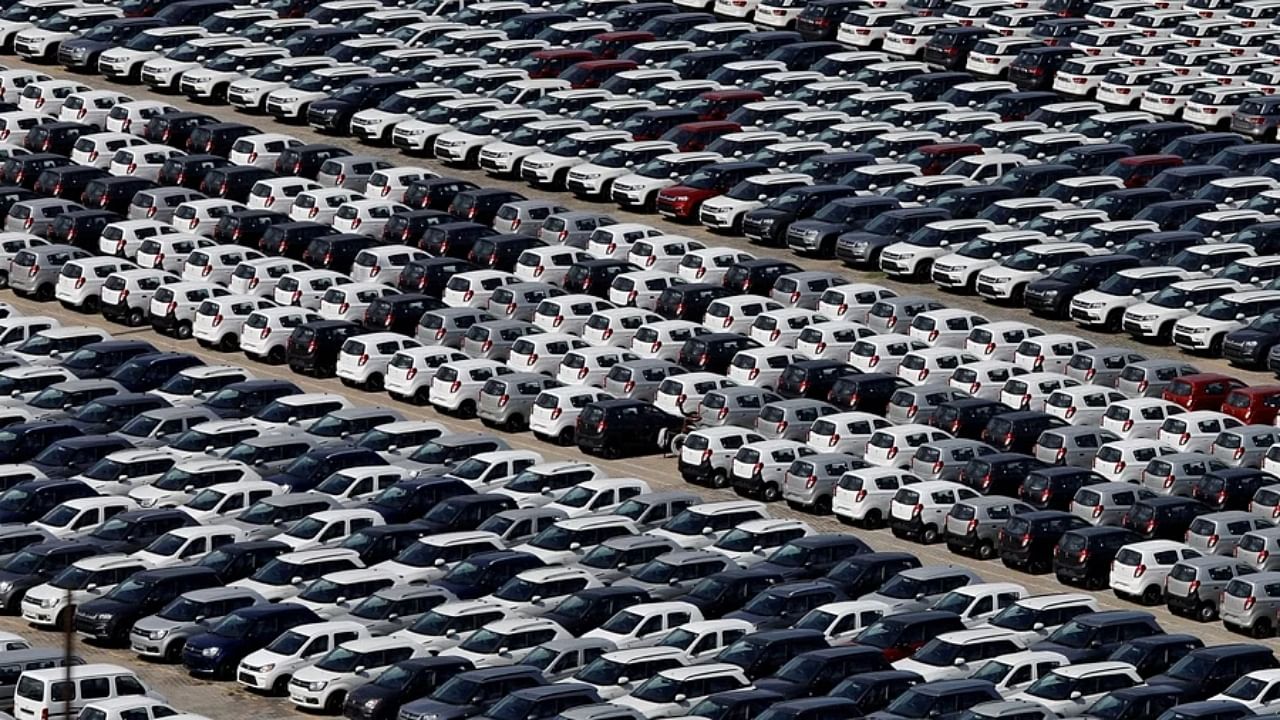
Cars kept in a sales lot (Representative image).
Credit: Reuters Photo
Aided by the rise in demand for SUVs, the sale of personal vehicles topped four million in the last year. However, there are concerns. Can this growth be sustained in the face of falling sales of entry-level cars and the grid lock in urban areas? If car ownership rises from the current 33 per 1,000 population to even 100 (US 860), can we handle the traffic? What is the current state of road transport, and what does the future hold?
First, some noteworthy achievements. Road network expansion has been breathtaking, with good-quality highways covering nearly all trunk routes and large towns. The unfurling version 2.0 will have 6 or 8-lane super highways of international standard, backed by an ecosystem of satellite-based toll collections, access-controlled roads, number plate recognition-enabled highway cameras, noise barriers, and well-designed restaurant complexes along the way.
Vehicles have undergone a significant upgrade in emission levels and safety through adherence to standards. However, with thousands of new vehicles being added daily in cities, roads, parks, and pavements have become parking lots. With cars and cattle sharing narrow city roads and encroachments, urban traffic is approaching paralysis. Flyovers only postpone the agony until the next intersection. Pot holes claim 2,000 lives annually with no perceptible remedy; 250 daily fatalities due to over-speeding alone have not triggered any visible action.
The policy on the use of highways and flyovers by two-wheelers appears ad hoc. At times, regulations appear to neutralise objectives. While encouraging alternate fuels such as ethanol, the government bans the use of cane to produce ethanol to maintain sugar production. BOT (build, operate, transfer) is a non-starter in the road sector due to unfavourable provisions. The government mandates EVs as the way ahead, while auto giants such as Toyota, BMW, and Suzuki and powerhouses in the US and Germany are betting on hybrids, hydrogen, and more as alternate fuels. Despite the high decibel campaign, the sale of EV-based cars is piffling, and gas-guzzling trucks, buses, and utility vehicles are merrily trotting along. To sum up, other than highways, the sector lacks a comprehensive vision. Policies and actions pertaining to urban planning and transport appear to be either absent, ad hoc, or ineffective. Can the government perform better?
The railways offer a contrast by approaching issues more comprehensively with specific plans. Multi-gauge was eliminated, and other than metros and hill railways, all lines were converted to broad-gauge, giving high flexibility in operations. Electrification has increased from 21,000 km in 2014 to 59,000 km in 2023, bringing 93% of route kilometres under electric traction, obviating enormous oil imports. Bio-toilets have replaced unhygienic toilets in all coaches, numbering over 68,000. Safer and more comfortable LHB coaches have replaced conventional coaches on several key trains. High-speed and more comfortable Vande Bharat trains are replacing conventional trains at a rapid pace. Luxurious trains commanding a premium are helping to minimise the losses on ordinary class passenger fares. Monstrous WAG12B class 12000 HP locomotives, dedicated freight tracks, and Ro Ro (vehicles transported by trains) are redefining logistics movement in the country. Laying extra tracks in trunk routes is a major step to tackle future traffic. Anti-collision systems are being installed progressively, and most level crossings have been eliminated, enhancing safety. To alleviate urban needs, metros have reached 15 cities. A large number of stations are getting a complete makeover, and the IRCTC system rivals the best in the world to interface with the railways. Relative to road transport, there is a more consistent vision and translation covering all stakeholders and all aspects of rail management.
A comprehensive strategy must be crafted to decongest cities by shifting offices to other towns. Imaginative schemes and incentives are needed to redevelop cities. Besides transforming the transportation sector, this huge activity can be a growth engine for the economy. The justice system must be tweaked to give teeth to dealing with traffic offenders. The government could take a more neutral stand on technology. The automotive sector, a vital component of the economy, should not feel cramped in its journey.
(The writer is an engineer and automotive industry veteran)